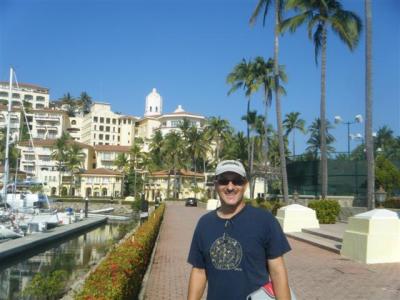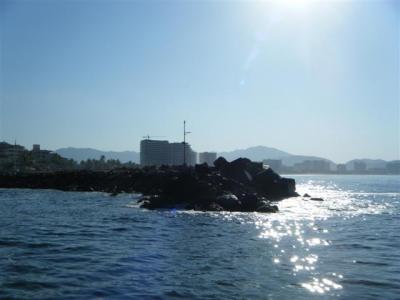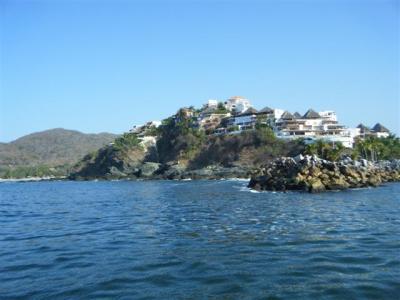Continued from yesterday”¦ Almost as soon as we were situated, a catamaran named “Gone Native” pulled into the space we had just vacated. In a crazy small world story, it turns out that we know them. In early 2007, a friend of ours had arranged for us to meet some people who actively cruise half the year. They were really nice people who gave us a lot of good tips and advice. At the time, their boat was in Europe. We hadn’t had contact with them since. And, suddenly, here they were! Like us, they are about to stop cruising for a while and are taking their boat home to California.
In another odd coincidence story, we are now directly across from a boat named Cosmo. It was around 1115 and we were puttering around on board. Eric heard someone knocking and calling out “Hello”, but it wasn’t at our boat, so he didn’t pay attention at first. Then he looked out and saw the person was knocking on Cosmo and realized it must be the quarantine officer. Eric brought him aboard. The quarantine paperwork took 20 minutes. The only thing he wanted to see was our trash, which he looked through briefly, then left.
Now it was time to go to the Port Captain’s office. We walked out to the street and quickly caught a taxi that took us to the next bay over, Santa Cruz. Bahia Santa Cruz is definitely geared at tourists. A large cruise ship dock makes up a breakwater that splits the bay in half. The sea wall lining the inside of the breakwater is completely covered by small power boats with bimini tops, clearly intended for taking tourists on sightseeing cruises up and down the bays. There were two small military vessels in the back, too. The boardwalk is a collection of tourist shops, quite a few of them vacant. There are large hotel and/or condo complexes on the hill that separates Bahia Santa Cruz from Bahia Chahue, some of them only half completed. On the backside of the shops, on the outside of the breakwater, is a small beach.
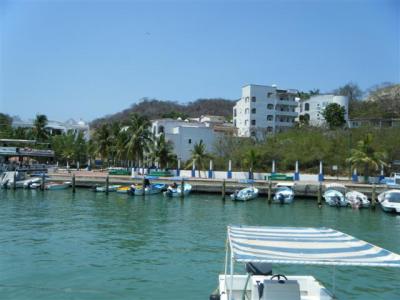
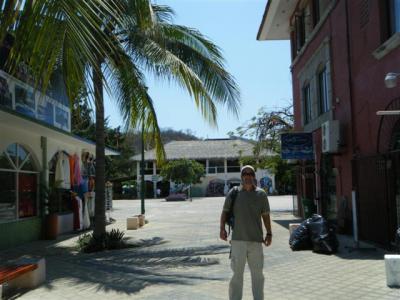
The Port Captain’s office is in and amongst the shops. There were several armed military officers lounging around near the office. You walk in the door to see Continue reading →
